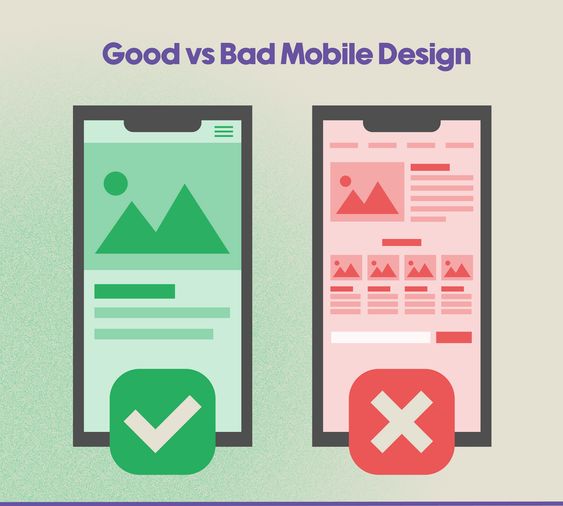info@entwino.com Prefer talking? Schedule a call here
The Fine Line Between Good and Bad Web Design
In the age of the internet, having a website is essential for businesses, organizations, and individuals alike. However, not all websites are created equal, and the difference between good and bad web design can make or break a website’s success.
Good web design focuses on creating an intuitive, visually appealing, and accessible website that is optimized for mobile and loads quickly. In contrast, bad web design can lead to frustration, slow loading times, and an inaccessible website. In this review, we will explore the key differences between good and bad web design and how they impact the user experience.

Navigation
Good web design includes intuitive and easy-to-use navigation. The navigation should be clearly visible and easily accessible from any page of the website. The navigation menu should be well-organized, making it simple for users to find what they’re looking for. A good example of this is Apple’s website, which has a simple and organized navigation menu.
In contrast, bad web design has confusing and difficult navigation. Visitors shouldn’t have to spend too much time trying to figure out how to navigate a website. If the navigation is too complicated or unclear, visitors are likely to leave the site frustrated. A good example of this is a cluttered and disorganized website with too many menus and submenus.
Layout
Good web design has a clean and organized layout that allows users to easily find what they’re looking for. The website should be easy to read, with a logical flow and well-organized sections. Good use of white space, typography, and images can make a website look professional and inviting.
In contrast, bad web design has a cluttered and disorganized layout that makes it difficult for visitors to find what they’re looking for. Too many graphics, colors, and fonts can be overwhelming and confusing for visitors. Additionally, bad layout design can make a website look unprofessional and uninviting.


Responsiveness
Good web design is responsive and works well across different devices and screen sizes. With the rise of mobile devices, it’s important for websites to be mobile-friendly and easy to use on smaller screens. A responsive website adjusts to different screen sizes and maintains its usability and readability.
In contrast, bad web design is not responsive and may not work well on mobile devices. Visitors using a mobile device may have difficulty navigating or reading the content on a website that isn’t designed for mobile use.
Loading speed
Good web design ensures fast loading speed. Visitors expect a website to load quickly, and a slow-loading website can lead to frustration and a high bounce rate. A good example of this is Google’s search engine, which has a fast loading time.
In contrast, bad web design can result in slow loading speed, which can be caused by factors such as large file sizes, too many plugins, or outdated software. A website with slow loading speed can negatively impact the user experience and result in high bounce rates.


Accessibility
Good web design considers accessibility for all users, including those with disabilities. A website should be easy to navigate and use for users who may have visual or auditory impairments, or who may use assistive technology such as screen readers. Good web design also ensures that the website is compatible with different browsers and operating systems.
In contrast, bad web design can be inaccessible and difficult to use for some users, leading to frustration and exclusion. This can include features such as small font sizes, lack of alt text for images, or videos that don’t include closed captioning.
In conclusion, good web design enhances the user experience and makes it easy for visitors to find what they’re looking for. It is intuitive, responsive, accessible, and fast-loading. In contrast, bad web design can be frustrating and off-putting, with confusing navigation, cluttered layout, slow loading speeds, and poor accessibility. A well-designed website can be a valuable asset for any business or individual, while a poorly designed website can harm your reputation and lead to a loss of visitors.


